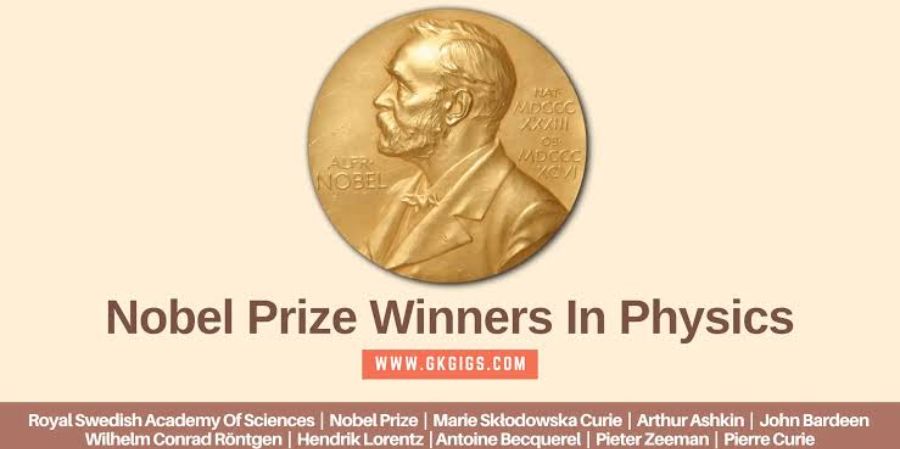Nobel Prize In Physics-year Wise
Part-1 (1901 - 1911)
- Wilhelm Conrad Röntgen was a German mechanical engineer and physicist who discovered electromagnetic radiation with the wavelength known as X-rays or Röntgen rays on November 8, 1895. For this work, he received the first Nobel Prize in Physics in 1901.
- Dutch physicist Hendrik Antoon Lorentz and Pieter Zeeman were jointly awarded the 1902 Nobel Prize in Physics for discovering and theorising the Zeeman effect.
- The first person to find evidence of radioactivity was Antoine Henri Becquerel, who was a French engineer and physicist who won the Nobel Prize. He shared the 1903 Nobel Prize in Physics with Marie Skodowska-Curie and Pierre Curie for their contributions to this discipline.
- British mathematician and physicist John William Strutt, 3rd Baron Rayleigh, made significant contributions to science. The 1904 Nobel Prize in Physics was given to him “for his investigations of the densities of the most important gases and for his discovery of argon in connection with these studies".
- Philipp Eduard Anton von Lenard, a German physicist of Hungarian descent who won the Nobel Prize for Physics in 1905 for his research on cathode rays and the discovery of many of their characteristics. His experimental realisation of the photoelectric effect was one of his most significant contributions.
- The Nobel Prize in Physics was awarded to J. J. Thomson in 1906 "for his theoretical and experimental investigations on the conduction of electricity by gases" (for Rayleigh's earlier win).
- The first American scientist to receive the Nobel Prize was Albert Abraham Michelson. For measuring the speed of light, he was awarded the prize in 1907 under the category of physics. Albert Michelson is thus figuratively the "C" in Albert Einstein's well-known equation E=MC2.
- Professor Gabriel Lippmann of the Sorbonne received the 1908 Nobel Prize in Physics from the Royal Academy of Sciences for his interference-based technology that made it possible for photographs to capture colour.
- Guglielmo Marconi, an Italian scientist and the creator of the first wireless telegraph or radio (1896). In 1909, he and German physicist Ferdinand Braun shared the Nobel Prize in Physics.
- Van der Waals' contribution to the equation of state for gases and liquids earned him the 1910 Nobel Prize in Physics. His name is most commonly linked to the Van der Waals equation of state, which defines how gases behave and condense into liquids.
- The Nobel Prize in Physics was given to Wilhelm Carl Werner Otto Fritz Franz Wien in 1911 “for his discoveries regarding the laws governing the radiation of heat.”


